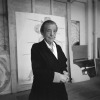Louis Bourgeois’ iconic sculpture in place in the Palace Park
Her Majesty The Queen and Her Royal Highness The Crown Princess officially unveiled Louise Bourgeois’ monumental sculpture Maman in the Palace Park. Visitors to the park will be able to enjoy the sculpture through the coming summer months.
"And here she is, with her monumental dimensions – 9 by 9 by 10 metres – reminding us of the intense fragility of life. She is trying, like all of us, to find balance. She acts, defends and manages to safeguard what is beautiful, even in frightening and perhaps threatening situations. She embodies the contrasts and paradoxes of life," said Queen Sonja when she, together with Crown Princess Mette-Marit, unveiled the French-American artist’s iconic work Maman in the Palace Park this afternoon.
“Louise Bourgeois’ Maman has trekked and spun her way across the world on her strong and slender legs, from New York in the west to Tokyo in the east, from Bilbao in the south to springtime in the Palace Park here in Oslo, surrounded by living fellow arachnids,” the Queen said in her speech.
Louise Bourgeois is regarded as one of the most influential artists of the 1900s. The sculpture Maman, now installed in the Palace Park, is owned by the artist’s own foundation, and is made of steel, bronze and marble. Maman towers over the landscape on eight legs, with her size of nearly ten by ten metres. There are 20 marble eggs nestled in the sac on her stomach.
The Queen and the Crown Princess walked from the Royal Palace to the site in the park where Maman has been placed. When they arrived they were welcomed by music from the Royal Norwegian Navy Band and some 80 schoolchildren from the French School in Oslo.
A number of special guests were invited to the unveiling, where Anne Sverdrup-Thygeson, author and professor of biology at the Norwegian University of Life Sciences, gave some remarks.
The Queen and the Crown Princess in front of Louise Bourgeois’ sculpture Maman in the Palace Park. Photo: Beate Dahle Oma / NTB
The spider as a symbol
The spider served as a recurring theme for Louise Bourgeois. The title itself can be translated as “Mummy” or “Mama”, and the artist herself has said that the work was created as a tribute to her own mother. It evokes the strength that is inherent in motherhood. The spider also refers to the mother’s activities, which include spinning, weaving, nurturing and protecting.
“Mother – mama – maman – is one of the most complex psychological motifs in our lives, and is thus also a popular, even inexhaustible, subject of art in every era. It invokes where we come from, what has moulded us, and what we pass on to our own children and those who come after us,” the Queen said in her speech.
Read the Queen’s speech at the unveiling in the Palace Park
The Crown Princess was in attendance at the unveiling in the Palace Park. Photo: Beate Dahle Oma / NTB
From her place in the Palace Park, Maman can be part of a dialogue with the sculptures that are nearby. There are works here presenting the pioneering feminist Camilla Collett (1813–1895) and the first ladies of the new Norwegian monarchy: Queen Maud, Crown Princess Märtha and Queen Sonja. The park is also the site of the Princess Ingrid Alexandra Sculpture Park, which was designed especially for and by children.
Collaboration
The sculpture is part of the Palace’s cultural outreach activities and sculpture parks, and it will be possible for the public and passersby to enjoy it free of charge until August 2023.
The project was made possible through a collaboration with the artist’s own Easton Foundation, the Peder Lund gallery – which represents the artist in Scandinavia – and the National Museum.
On 4 May the National Museum will open a major retrospective exhibition of Louise Bourgeois’ art, Imaginary Conversations. Another of Bourgeois’ spider installations, Spider, will be exhibited in the museum’s Light Hall.
Installation view of Louise Bourgeois’ Maman (1999) in the Palace Park, Oslo, Norway, 2023. Photo: Øyvind Möller Bakken © The Easton Foundation/Licensed by BONO, NO and VAGA at Artists Rights Society (ARS), NY
This remarkable artist will make her mark on the city throughout the summer, both in the Palace Park and in the exhibition halls of the National Museum.
Sculptures by Bourgeois can also be seen at Tjuvholmen and in Ekeberg Sculpture Park in Oslo. In 2010 Bourgeois created a monument for witches, The Damned, the Possessed and the Beloved, together with Swiss architect Peter Zumthor and Norwegian historian Liv Helene Willumsen. The monument, located in Vardø in the north of Norway, is a memorial for the victims of witchcraft trials in the 1600s.
Louise Bourgeois' skulptur Maman:
- The career of Louise Bourgeois (1911–2010) spanned over 70 years and resulted in a series of iconoclastic works. Her major retrospective exhibition at MoMA in 1982 was an important turning point in her career. Then 70 years old, she explained that her works were autobiographical and addressed topics such as jealousy, violence, desire, betrayal, fear, anxiety and loneliness. The exhibition opening in May at the National Museum in Oslo highlights Bourgeois’ involvement in contemporary society by showing how her works interconnect with the topical events of her time.
- Maman is a monumental sculpture from 1999, of such massive proportions that it must be exhibited either outdoors or inside a building of very large dimensions. The sculpture’s size allows the public to move under the sculpture and between its eight legs.
Materials: Bronze, steel and marble
Dimensions: 927.1 x 891.5 x 1023.6 cm
Copies: 6 + 1 AP
- Works by Louise Bourgeois are included in several public collections such as Carnegie Museum, Pittsburgh; Corcoran Gallery of Art, Cleveland: Hirshhorn Museum and Sculpture Garden, Washington, DC; Kunstmuseum Basel, Basel; Metropolitan Museum of Art, New York; Centre Georges Pompidou, Paris; National Gallery of Art, Washington, DC; Museo Nacional Centro de Arte Reina Sofía, Madrid; Solomon R. Guggenheim Museum, New York; Tate Collection, London; and Whitney Museum of American Art, New York.
- The public and passersby will be able to enjoy the work in the Palace Park free of charge until August 2023.
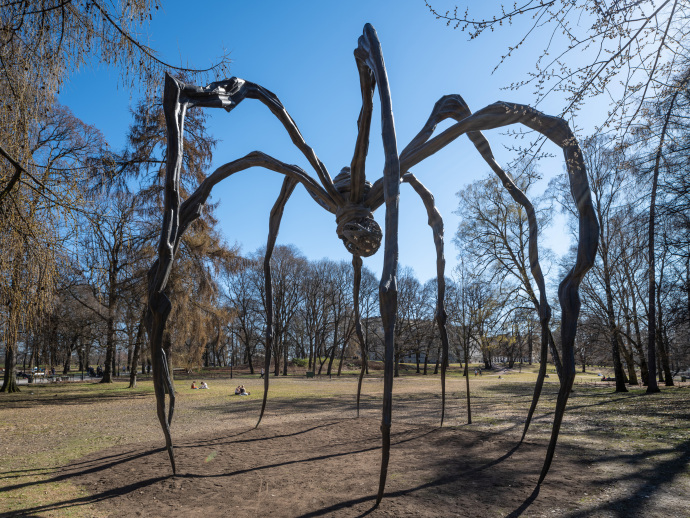
Current news
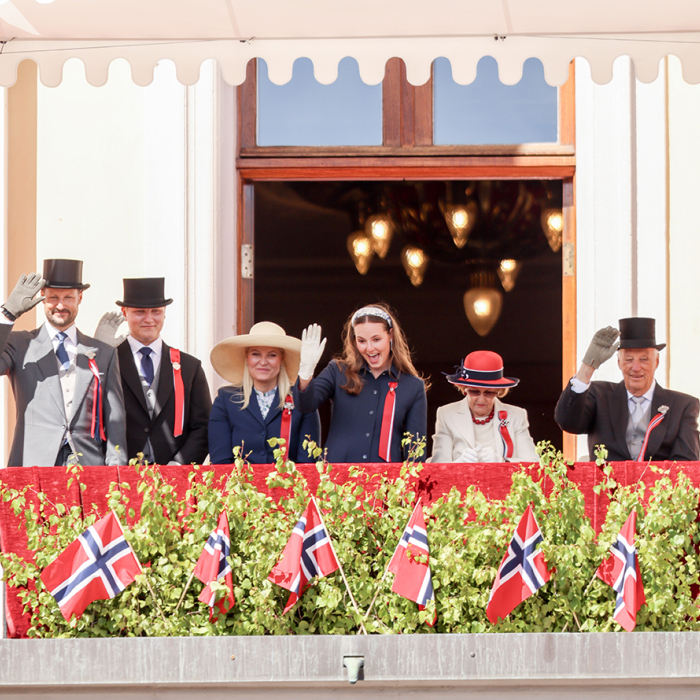
Happy Constitution Day!
The Royal Family was in attendance on the Palace Balcony when the children's parade reached the Palace Square at 10:30 this morning. From there, they could greet more than 26,000 children from 109 schools taking part in Oslo's children's parade this year.
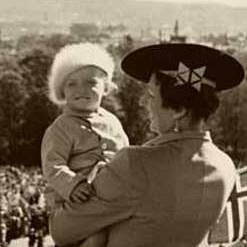
Celebrating May 17th
For more than 100 years, the Royal Family has greeted the Constitution Day children’s parade in Oslo from the balcony of the Royal Palace.
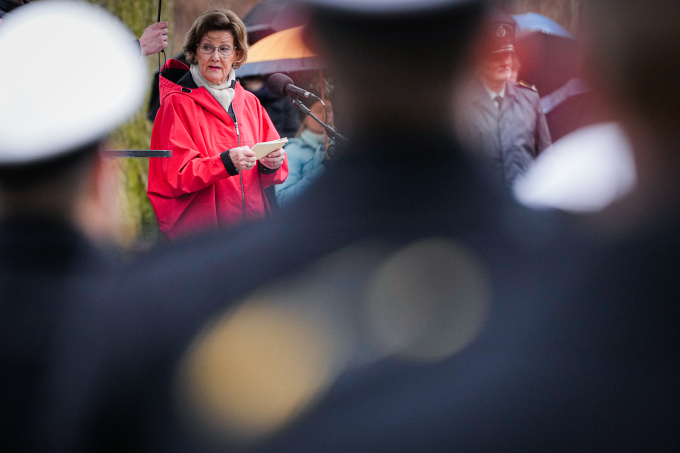




 Enlarge
Enlarge





